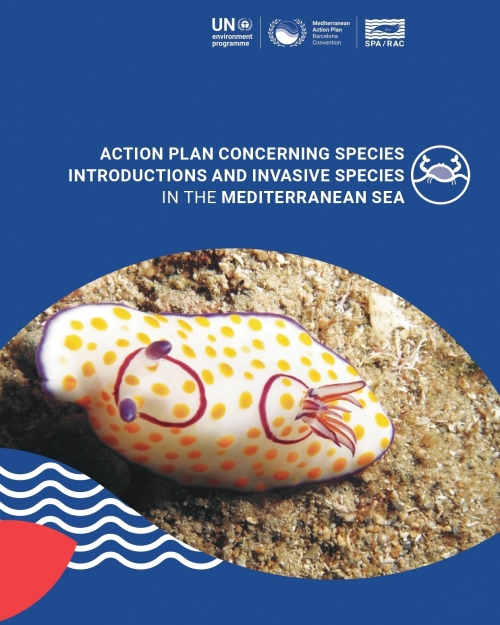Background
The trend of new introductions of alien species in the Mediterranean has been increasing. Many of these species have become invasive with serious negative impacts on biodiversity, human health, and ecosystem services.
There are many routes and mechanisms by which new alien species arrive in the Mediterranean Sea. Among the important pathways are shipping (by means of ballast waters and hull fouling), corridors, maritime transport and water ways, aquaculture, trade in live marine organisms (aquarium trade and fishing bait), fishing activities and aquarium exhibits. Other additional factors such as global warming may enhance alien species to spread in the Mediterranean.
In 2003, the Contracting Parties adopted the Action Plan concerning Species Introductions and Invasive Species in the Mediterranean Sea and committed to take all necessary measures to prevent as appropriate, minimize and limit, monitor, and control marine biological invasions and their impacts on biodiversity, human health, and ecosystem services.
Objectives
The main objective of the Action Plan is to promote the development of coordinated efforts and management measures to address the species introductions and invasive species in the Mediterranean in the most effective way possible.
Recommendations
The implementation of management actions for prevention, control and eradication of species introductions, should be considered at national and regional levels.
At national level:
- encouraging all necessary actions aimed at improving the available knowledge;
- conducting baseline studies and establishing monitoring programmes to collect reliable and relevant data on the distribution of alien species in the territorial waters;
- coordinating the actions for the regular provision of information for the national and Mediterranean-wide reference lists of alien species;
- supporting, through the provision of essential information, the ‘Marine Mediterranean Invasive Alien Species’ (MAMIAS) database and online platform;
- encouraging the implementation of scientifically-backed and regionally-harmonized measures of prevention and control in particular for the high-risk pathways of Non-Indigenous Species (NIS);
- developing training and raising awareness programmes on risks, legal issues, best practices, and management actions for prevention and mitigation of impacts.
At regional level:
- coordinating, supporting, and updating the ‘Marine Mediterranean Invasive Alien Species’ (MAMIAS) database and online platform;
- creating an active network of partners within the framework of MAMIAS;
- linking MAMIAS to other international networks;
- elaborating and adopting at regional level guidelines to assist the relevant national authorities;
- assisting national authorities to organize training on taxonomical issues, identification of target species, monitoring methods and reporting, and management practices;
- coordinating the actions taken by neighbouring Parties to prevent and control the introduction of alien species;
- supporting cooperation at international level.
Updates
The Action Plan was updated in 2016.
Complementary measures in the framework of the Barcelona Convention:
- Desirous to address the risk arising from the introduction of invasive alien species through ships’ ballast water and based on the work of “Building Partnerships to Assist Developing Countries to Reduce the Transfer of Harmful Aquatic Organisms in Ships’ Ballast Water” (“GloBallast Partnerships” Project), a Mediterranean Strategy on Ships’ Ballast Water Management (MBWM), including its Action Plan and Timetable, was adopted by the 17th Ordinary Meeting of the Contracting Parties to the Barcelona Convention and its Protocols in 2012.
- At their 19th Ordinary Meeting in 2016, the Contracting Parties to the Barcelona Convention adopted the Integrated Monitoring and Assessment Programme and related Assessment Criteria (IMAP), which will enable a quantitative, integrated analysis of the state of the marine and coastal environment, covering non-indigenous species, along with pollution and marine litter, biodiversity, coast, and hydrography, based on regional common indicators, ecological objectives and Good Environmental Status (GES) description.

